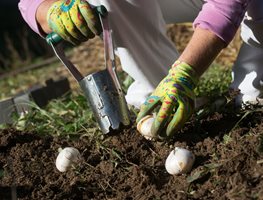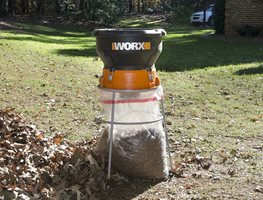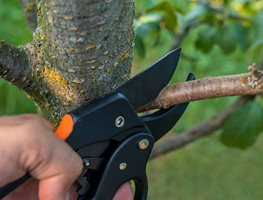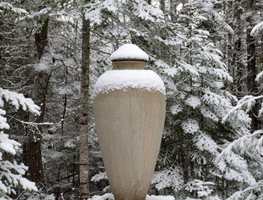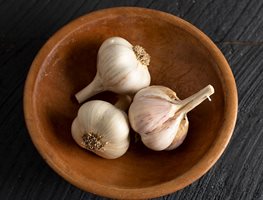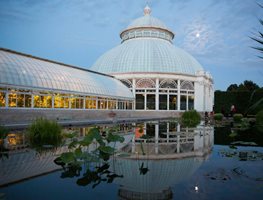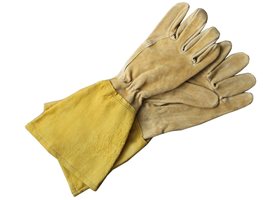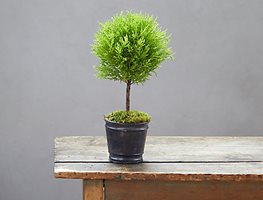10 Gardening Activities for October in the Northeast
Here are a few garden reminders, inspiring ideas, maintenance tips, and places to visit this month.
1. Get Creative with Bulbs
You might have started planting bulbs back in September, but you can keep planting bulbs throughout the garden this month. There are so many different ways to get creative with bulbs, so try something new this year! In addition to planting bulbs in containers outdoors, remember that you can also plant them in containers indoors. In garden beds outside, experiment with planting “rivers” of bulbs for a beautiful effect. You can also try color blocking (planting bulbs of all one color together in large groups).
2. Use Leaves to Replenish Nutrients in Your Garden
If leaves have already dropped, you have two options: One, leave them where they fall so they act as a layer of mulch in your garden. When cold weather returns, they’ll also help insulate roots. If you want to clean up and remove the leaves from your garden, consider adding them to your compost pile. Dry leaves are full of carbon that will help balance the more nitrogen-heavy green waste such as grass clippings, green leaves, or cuttings from perennials and shrubs. If you have too many leaves, consider using a leaf mulcher to reduce volume and help leaves break down faster in the compost pile.
3. Blow Out Irrigation Lines & Remove Hoses
If your first frost date is approaching, it’s time to winterize your irrigation lines or hire a professional to do it so your lines don’t freeze. This video is helpful in understanding how and why irrigation lines need to be winterized. It’s also a good idea to empty and store hoses and nozzles until spring.
4. Avoid Pruning Trees & Shrubs; Cut Back on Watering
Besides removing dead or broken branches, it’s important to avoid pruning trees and shrubs as pruning stimulates tender new growth that wouldn’t have time to harden off for winter. Additionally, now’s the time to cut back on watering as wetter weather returns. If you have newer plants that you put in the ground this year, be sure to water them regularly until the ground freezes.
5. Store Garden Ornaments
Any birdbaths, pots, statues, or other garden ornaments that are sensitive to frost should be brought indoors and stored. Leaving them outside through snowstorms or freezing temperatures can cause cracking and damage the pieces. If you want garden elements that you can leave outside for architectural interest through winter, buy freeze-resistant containers and urns from suppliers such as Seibert & Rice, Lunaform, and Terrain.
Don't miss what to do in the garden each month, make sure you're getting our weekly newsletter.
6. Plant Garlic
In the Northeast, October is a good month to plant garlic cloves. Cloves will establish, growing roots until the ground freezes, start growing in the spring, and be ready to harvest the following summer. To learn how to plant garlic, watch this how-to video from Garden Answer. Garlic is a very popular crop in home gardens because it’s easy to grow, tastes particularly good fresh, and each variety has a distinct flavor profile. If you’re looking to buy garlic to plant, visit online retailers such as Burpee, or Johnny's Selected Seeds.
7. Tour Gardens Under Glass
Botanic gardens can be gorgeous in the fall, but sometimes the weather is too cold to stay outside for long. Visit botanic gardens that have extensive conservatory gardens so you can head indoors to heat- and moisture-controlled environments. The feel of the tropics on a cold fall day is magical. Three of the best conservatory gardens in the country are located at the New York Botanical Garden in New York, at the United States Botanic Garden in Washington D.C., and at Longwood Gardens in Pennsylvania. Longwood’s indoor plant collections are some of the most extensive including orchids, bonsai, tropical plants, desert plants, Mediterranean gardens, green walls, rare plants, Jurassic plants, and more.
8. Cut Back Tender Edible Crops
October is a good time to cut back a variety of edible crops including blackberry canes, asparagus foliage, and rhubarb shoots. Once foliage has begun to die back and turn brown, it’s time to remove the canes, foliage, or shoots. If you’re cutting back blackberries with thorns, be sure to wear pants, protective eyeglasses, and rose cutting gloves. This will help protect your skin from sharp, needle-like thorns. Gloves that cover the forearm will protect you the best. Try Womanswork All Leather Gauntlet Gloves.
9. Order Amaryllis & Indoor Topiary
Poinsettia are the most ubiquitous plant for the holidays. This year, branch out a little by growing amaryllis indoors in pots or try your hand at indoor topiary. These plants offer a fresh way to spruce up your home for the fall and winter months. For topiary, lemon cypress trees, rosemary, pelargonium, santolina, and mirror plant are nice choices. You may need to stake or prune young plants to the desired shape or buy pre-potted specimen such as this rosemary topiary or a lemon cypress topiary. If you’d like to get your hand on amaryllis, K.van Bourgondien has a wide selection of beautiful and interesting varieties.
10. Take a Trip to Acadia National Park
The Northeast is one of the most spectacular locations for fall color. For gardeners, it’s a good time to get away and enjoy plants in the wild. One way to do this is to take a road trip to Acadia National Park in Maine. With roughly 3.5 million visitors per year, this park is one of the top 10 most visited national parks in the country. It’s no wonder, as the scenery along the Atlantic coast is jaw-dropping. Plus, along the way there are plenty of stops and views of trees with fall color. If you can't make it to Maine, check out one of our self-guided day trips of incredible gardens in DC, New York, Philadelphia and more.
If you enjoyed this information, sign up for our weekly newsletter. Each week, you'll get Garden Design's best delivered right to your inbox including design tips, plant picks, great gardens, outdoor living products, and events to enjoy — along with monthly gardening checklists just for your area.
Do you know someone who would enjoy this Northeast Region gardening information? Why not share it with them?
When you purchase products through links on our site, we may receive an affiliate commission. Thank you for your support.
